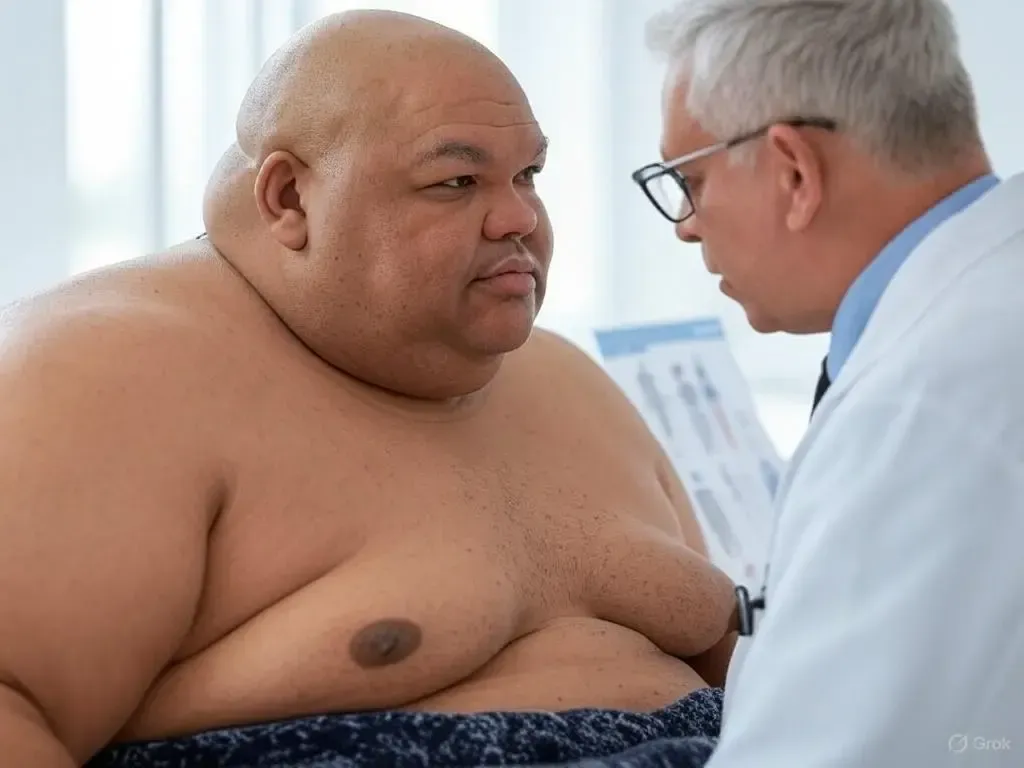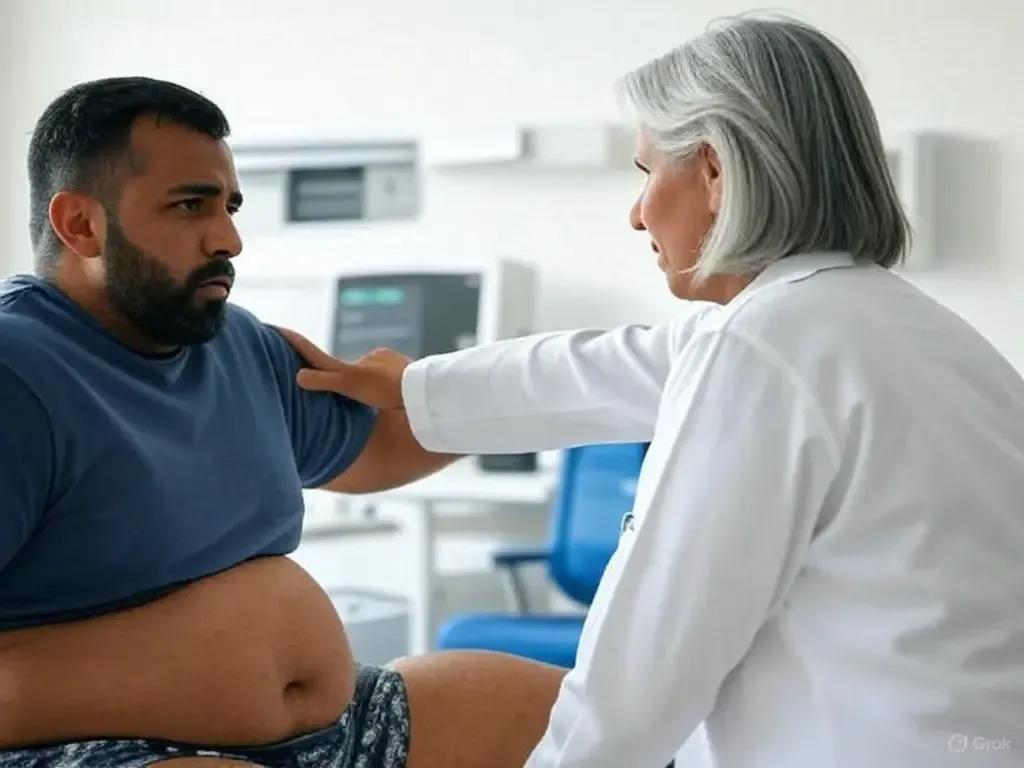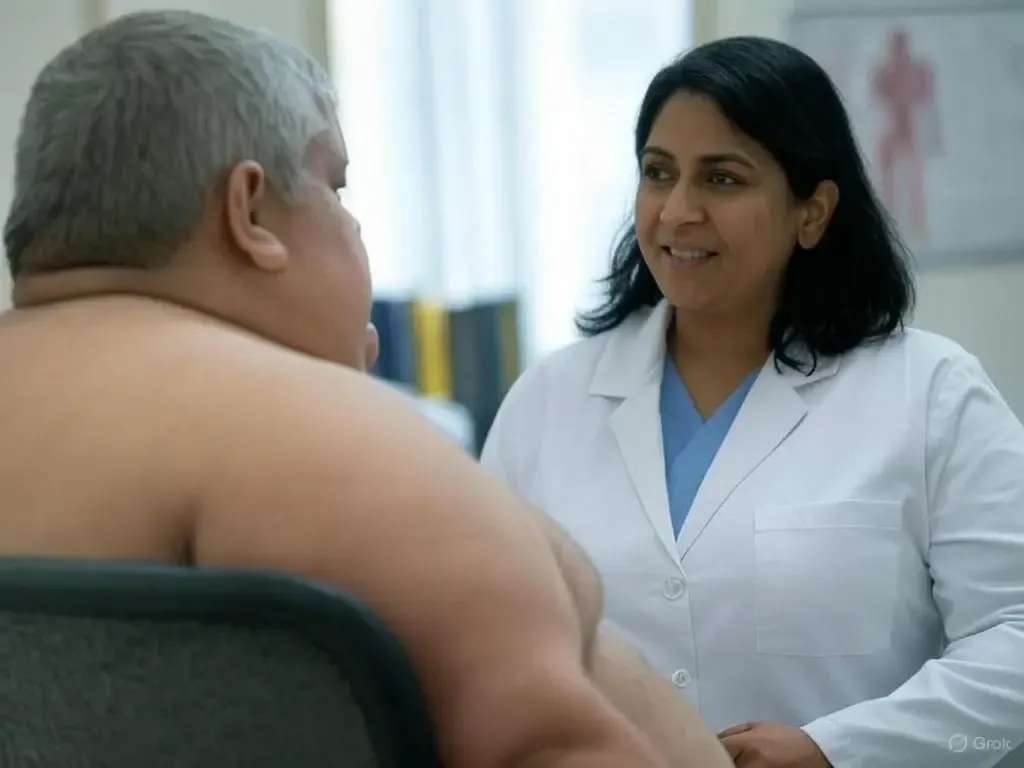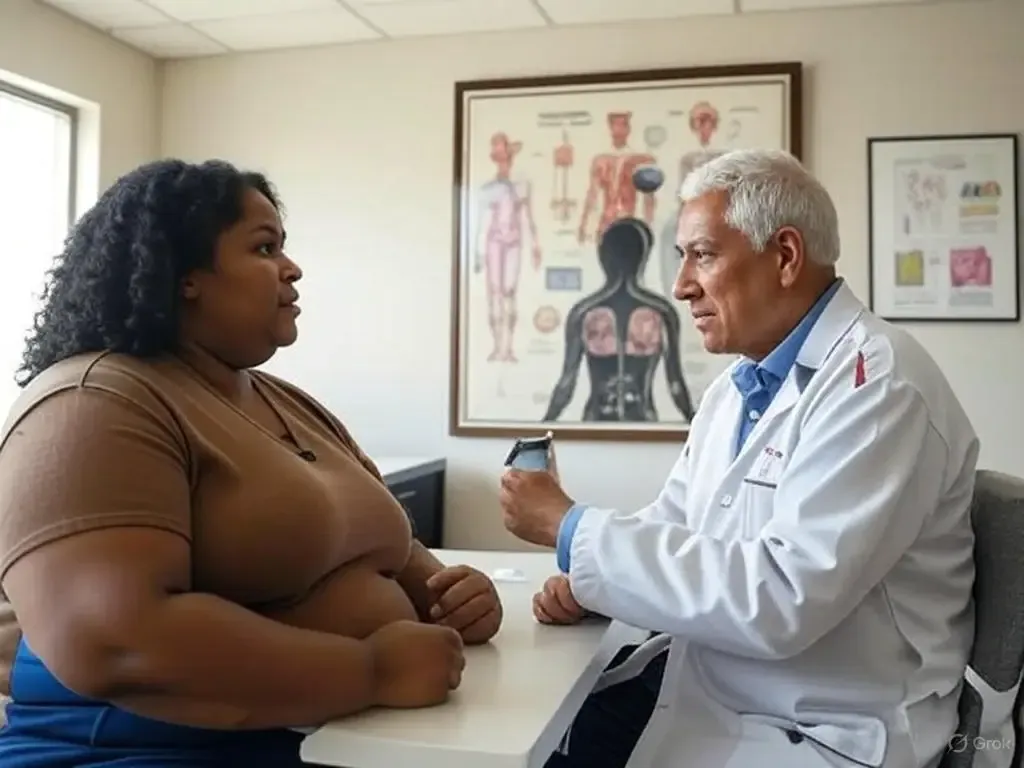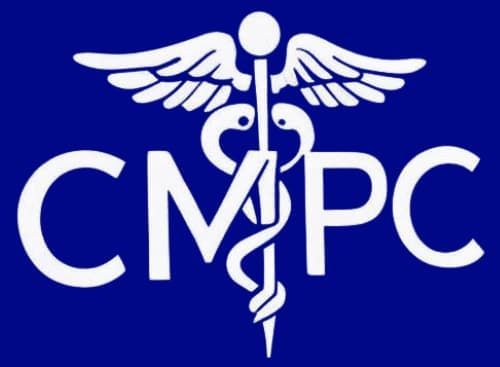
When considering weight loss solutions, many individuals with a high BMI explore options such as weight loss surgeries and gastric balloons. While these interventions can be highly effective, it's natural to have concerns about their safety. Understanding the potential risks, benefits, and safety profiles of these procedures can help you make an informed decision that aligns with your health goals.
For many people struggling with obesity, conventional methods like diet and exercise alone may not yield sufficient results. Medical interventions can provide the support needed to achieve significant weight loss and improve health outcomes. However, navigating the various options available can feel overwhelming, especially when safety is a primary concern.
This comprehensive guide will examine surgical and non-surgical weight loss interventions and their safety profiles and help you understand which might suit your situation.
Understanding Weight Loss Surgeries
Weight loss (bariatric) surgeries are procedures designed to help obese individuals achieve significant weight reduction by altering the digestive system. These interventions work through various mechanisms, including restricting food intake, reducing nutrient absorption, or combining both.
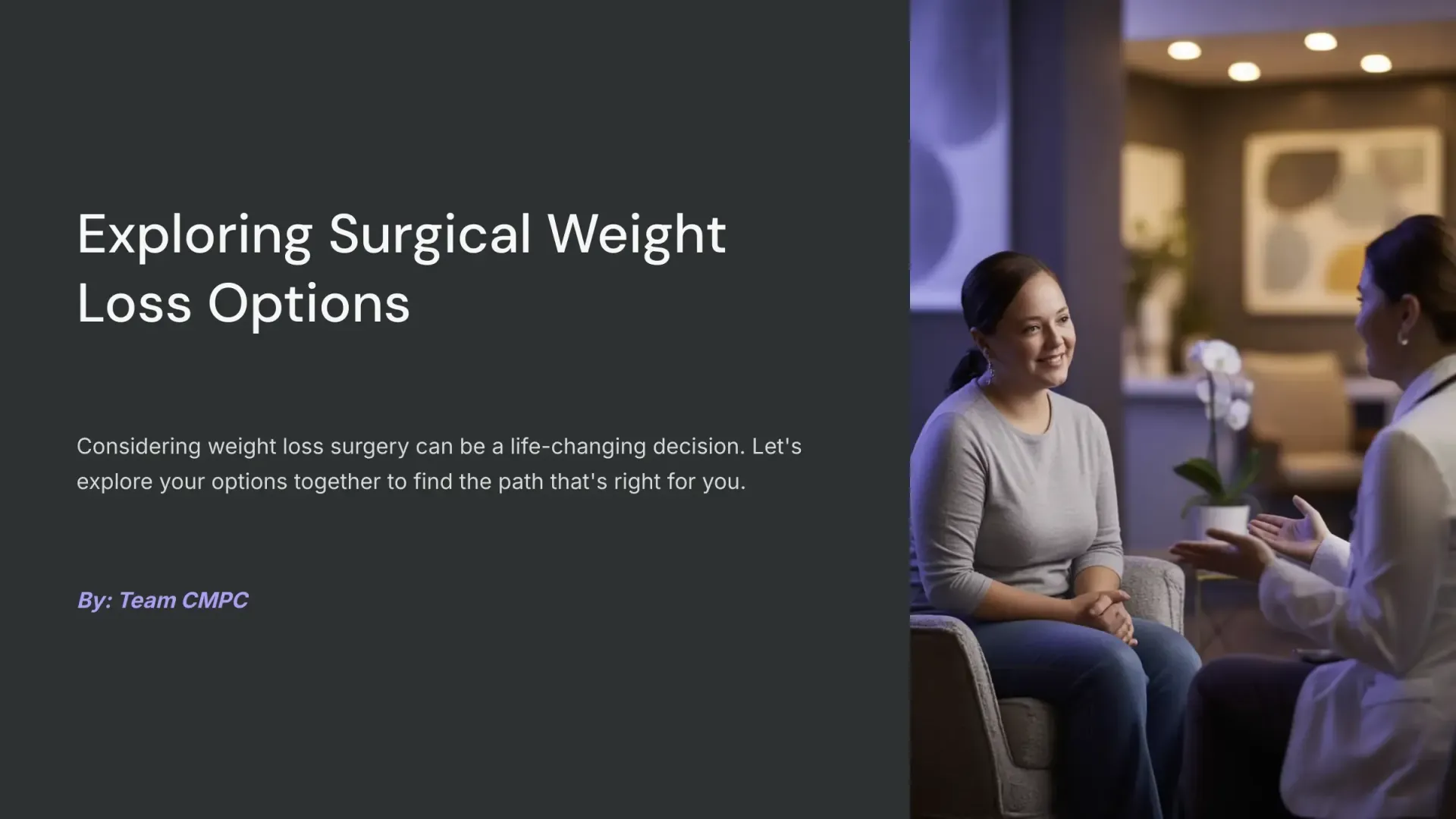
Types of Weight Loss Surgeries
1. Gastric Bypass (Roux-en-Y)
- Creates a small stomach pouch
- Bypasses a portion of the small intestine
- Combines restrictive and malabsorptive elements
- Results in hormonal changes that reduce hunger
Due to its effectiveness, the Roux-en-Y gastric bypass is often considered the gold standard of weight loss surgeries. During this procedure, surgeons create a small pouch from the upper section of the stomach, significantly limiting the amount of food you can consume at one time. Then, they connect this pouch directly to the middle portion of the small intestine, bypassing the rest of the stomach and the initial segment of the small intestine.
This dual-mechanism approach restricts food intake and reduces the absorption of calories and nutrients. Additionally, the procedure alters gut hormones that influence hunger, satiety, and blood sugar control, often leading to impressive improvements in conditions like type 2 diabetes, sometimes even before significant weight loss occurs.
Patients typically lose 60-80% of their excess weight within the first two years after gastric bypass, making it one of the most effective procedures for long-term weight management.
2. Gastric Sleeve (Sleeve Gastrectomy)
- Removes approximately 80% of the stomach
- Creates a banana-shaped stomach "sleeve"
- Preserves regular digestive tract continuity
- Reduces hunger hormone production
Sleeve gastrectomy has become increasingly popular due to its relative simplicity compared to gastric bypass. A surgeon removes about 80% of the stomach during this procedure, leaving a sleeve-shaped pouch with much less food.
Unlike gastric bypass, sleeve gastrectomy doesn't involve rerouting the intestines, which may reduce the risk of certain complications. However, the procedure is still highly effective because it significantly reduces the stomach's capacity and removes the portion of the stomach that produces ghrelin, the "hunger hormone." This hormonal change helps reduce appetite and improve satiety.
Patients typically lose 50-70% of their excess weight following sleeve gastrectomy, with most weight loss occurring in the first year.
3. Adjustable Gastric Band
- Place a silicone band around the upper stomach
- Creates a small pouch above the band
- It is adjusted through a port beneath the skin
- Fully reversible if needed
The adjustable gastric band is a less invasive option that involves placing a silicone band around the upper portion of the stomach. This creates a small pouch that fills quickly when eating, sending signals of fullness to the brain. The band can be tightened or loosened by injecting or removing saline solution through a port placed under the skin.
While gastric banding is less invasive and fully reversible, it typically results in less weight loss (40-50% of excess weight) compared to other surgical options. It also requires frequent follow-up visits for adjustments and has a higher reoperation rate due to band-related complications.
Safety of Weight Loss Surgeries
Weight loss surgeries have evolved significantly over the decades, with improvements in surgical techniques, patient selection criteria, and post-operative care all contributing to enhanced safety profiles. Today, these procedures are generally safe when performed by experienced medical professionals in accredited facilities.
Short-term Risks
- Infection at incision sites
- Blood clots in the legs or lungs
- Bleeding during or after surgery
- Adverse reactions to anesthesia
- Leaks from surgical connections
Like any major surgery, bariatric procedures carry some immediate risks. Surgical site infections can occur, though they're typically treatable with antibiotics. Blood clots represent a more serious risk, which is why patients are often given blood thinners and encouraged to move around as soon as possible after surgery.
Leaks from the newly created surgical connections between the stomach and intestines are a concern, particularly with gastric bypass and sleeve gastrectomy. Though rare (occurring in 1-2% of cases), leaks can be serious and may require additional surgery.
Most bariatric surgery programs implement enhanced recovery protocols that minimize these risks through careful pre-operative preparation, meticulous surgical technique, and structured post-operative care.
Long-term Risks
- Nutritional deficiencies
- Dumping syndrome
- Gallstone formation
- Potential for weight regain
- Hernias or intestinal obstruction
Long-term complications after weight loss surgery often relate to the body's altered digestive process. Nutritional deficiencies are common, particularly with malabsorptive procedures like gastric bypass. These may include iron, vitamin B12, calcium, and vitamin D deficiencies, requiring lifelong supplementation and regular monitoring.
Dumping syndrome occurs when food moves too quickly from the stomach to the small intestine, causing symptoms like nausea, vomiting, diarrhea, dizziness, and fatigue. It's most common after eating foods high in sugar or simple carbohydrates.
Gallstones develop in many patients during rapid weight loss as the body metabolizes fat and increases cholesterol excretion into bile. Some surgeons may recommend preventive removal of the gallbladder during bariatric surgery or prescribe medication to reduce this risk.
Despite these potential complications, weighing them against the significant health benefits of successful weight loss is essential. Research consistently shows that bariatric surgery significantly improves obesity-related conditions such as type 2 diabetes, hypertension, sleep apnea, and joint pain, often reducing or eliminating the need for medication.
Benefits of Weight Loss Surgeries
- Significant and sustainable weight loss
- Improvement or resolution of obesity-related conditions
- Enhanced quality of life
- Increased longevity
- Reduced healthcare costs over time
The benefits of bariatric surgery extend well beyond weight loss itself. Many patients experience complete resolution of type 2 diabetes, with some studies showing remission rates of 80-90% for gastric bypass patients. Hypertension improves in more than 70% of patients, and sleep apnea resolves in over 80%.
Beyond these measurable health improvements, patients often report significant enhancements in quality of life, including better mobility, reduced pain, improved mood, enhanced self-confidence, and greater participation in social and physical activities.
Research has also demonstrated that bariatric surgery can increase life expectancy in individuals with severe obesity, primarily by reducing the risk of cardiovascular events and cancer.
Understanding Gastric Balloons
For those seeking less invasive alternatives to surgery, gastric balloons offer a promising option. These devices temporarily aid weight loss through a minimally invasive procedure that doesn't permanently alter the digestive tract.
How Gastric Balloons Work
- Temporary space-occupying devices
- Reduce stomach capacity without surgery
- Create earlier feelings of fullness
- Typically remain in place for 4-6 months
- Combine with lifestyle modification programs
Gastric balloons are soft, silicone devices placed in the stomach and then filled with saline solution (or sometimes air), occupying space and creating a feeling of fullness. This helps patients eat smaller portions and feel satisfied with less food.
One of the most innovative options today is the Allurion Gastric Balloon Program, which offers a non-invasive approach. Unlike traditional balloons that require endoscopy for placement and removal, the Allurion balloon comes in a swallowable capsule. Once in the stomach, it's filled with saline through a thin catheter that is then removed. After approximately 16 weeks, the balloon automatically deflates and passes naturally through the digestive system.
Gastric balloons are designed to be temporary interventions, typically remaining in place for 4-6 months. It makes them ideal for individuals who need help establishing new eating habits but don't require or desire a permanent surgical solution.
Most balloon programs combine the device with comprehensive lifestyle support, including nutritional counselling, behaviour modification, and exercise guidance. This integrated approach helps patients develop sustainable habits to lose weight after removing the balloon.
Benefits of Gastric Balloons
- Non-surgical procedure with minimal recovery time
- Temporary intervention with no permanent changes
- Effective bridge to lifestyle modification
- Lower cost compared to surgical options
- Suitable for lower BMI ranges than surgery
The primary advantage of gastric balloons is their non-surgical nature, eliminating many of the risks associated with bariatric surgery. Most patients return to work and normal activities within 1-3 days after placement, compared to weeks of recovery following surgery.
Their temporary nature makes balloons an excellent option for individuals who are hesitant about permanent anatomical changes or who want to "test drive" the feeling of restricted stomach capacity before considering surgery.
Gastric balloons typically result in 10-15% total body weight loss during treatment, which can significantly improve obesity-related health conditions and motivate continued lifestyle changes.
Additionally, balloons are generally more affordable than surgical options. They may be suitable for patients with BMIs in the 27-35 range who don't qualify for bariatric surgery but still need intervention beyond diet and exercise alone.
Safety of Gastric Balloons
Gastric balloons are considered a safe and effective weight loss option with minimal risk compared to surgical alternatives. Their temporary nature and the absence of surgical incisions contribute to their favourable safety profile.
Short-term Effects
- Nausea and vomiting during the adjustment period
- Abdominal discomfort or cramping
- Acid reflux or heartburn
- Difficulty sleeping comfortably
- Feeling of heaviness in the abdomen
The first few days after balloon placement often involve an adjustment period as the body gets used to having the device in the stomach. Nausea and vomiting are common during this time but typically resolve within 3-7 days with proper medication management.
Some patients experience acid reflux or heartburn, which can usually be managed with proton pump inhibitors or other acid-reducing medications. Changes in sleeping position may be necessary to accommodate the feeling of fullness or pressure in the abdomen.
These initial discomforts are generally well-tolerated and short-lived, with most patients adapting to the balloon within a week and experiencing few issues for the remainder of the treatment.
Rare Complications
- Balloon deflation before scheduled removal
- Balloon migration causing obstruction
- Gastric ulcers or erosions
- Persistent intolerance requiring early removal
- Esophageal or gastric perforation (extremely rare)
While serious complications with gastric balloons are rare, they can occur. Spontaneous balloon deflation happens in a small percentage of cases. If the balloon is filled with a coloured dye solution, this will cause the patient's urine to change colour, alerting them to seek medical attention. With the Allurion balloon, deflation is part of the normal process at the end of treatment.
Migration of a deflated balloon can potentially cause intestinal obstruction, though this is extremely rare with modern balloons. Similarly, gastric ulcers or erosions can develop where the balloon contacts the stomach lining, but this risk is minimized through proper monitoring and medication.
In some cases, patients may experience persistent intolerance to the balloon despite medication management, necessitating early removal. However, this occurs in less than 5% of patients with newer balloon designs.
The most serious complications, such as gastric perforation, are exceedingly rare (less than 0.01%) and typically associated with pre-existing gastric conditions or improper placement.
Comparing the Safety of Surgeries and Balloons
When considering weight loss interventions, it's helpful to understand how surgical and non-surgical options compare across various factors:
Key Comparison Factors
1. Invasiveness
- Weight Loss Surgery: High (requires general anesthesia, surgical incisions, and permanent anatomical changes)
- Gastric Balloons: Low (typically an outpatient procedure with no incisions or permanent changes)
The stark difference in invasiveness between these options is a primary consideration for many patients. Surgical procedures require general anesthesia, carry the risks associated with any major surgery, and make permanent changes to the digestive tract. Gastric balloons, particularly newer options like the swallowable Allurion balloon, require minimal or no sedation and make no permanent changes to your body.
2. Recovery Time
- Weight Loss Surgery: Weeks to months (2-4 weeks before returning to normal activities)
- Gastric Balloons: Few days to a week (most patients resume normal activities within 1-3 days)
Recovery after bariatric surgery involves a staged diet progression over several weeks, restrictions on physical activity, and typically 1-2 weeks away from work. Balloon patients generally experience only a few days of adjustment symptoms before returning to normal routines, though dietary modifications are still recommended throughout the treatment period.
3. Risk Level
- Weight Loss Surgery: Moderate to high (includes surgical complications and long-term nutritional concerns)
- Gastric Balloons: Low to moderate (primarily short-term discomfort with rare serious complications)
The risk profile of surgical interventions naturally includes both general surgical risks and procedure-specific complications. While modern surgical techniques have greatly improved safety, these procedures still carry higher risks than non-surgical alternatives. Gastric balloons pose risks during the adjustment period, with serious complications exceedingly rare.
4. Effectiveness
- Weight Loss Surgery: Long-term, significant weight loss (50-80% of excess weight)
- Gastric Balloons: Temporary, moderate weight loss (10-15% of total body weight)
Bariatric surgery offers more dramatic and typically more durable weight loss results. However, balloons can still provide clinically significant weight reduction that improves health markers, especially with comprehensive lifestyle support. For many patients, the moderate weight loss achieved with a balloon is sufficient to enhance the quality of life and reduce obesity-related health risks.
5. Cost
- Weight Loss Surgery: Higher (US $15,000-$25,000 depending on procedure and location)
- Gastric Balloons: Lower (US $6,000-$9,000 for the complete program)
The financial aspect cannot be overlooked when comparing these options. Even with potential insurance coverage, surgical options represent a significant investment. Balloons typically cost less than half the surgery price, though they may be less likely to be covered by insurance.
Who Should Consider These Options?
Understanding which intervention might be proper depends on several factors, including your BMI, health status, weight loss goals, and personal preferences regarding invasiveness and permanence.
1. Candidates for Weight Loss Surgery
- BMI of 40 or higher (or BMI of 35+ with obesity-related conditions)
- History of failed weight loss attempts with conventional methods
- No medical or psychological contraindications to surgery
- Understanding lifelong lifestyle changes required
- Commitment to long-term follow-up care
Bariatric surgery is typically recommended for individuals with severe obesity (BMI ≥40) or those with a BMI ≥35 who also have conditions like type 2 diabetes, hypertension, or sleep apnea. These criteria reflect the point at which the health benefits of surgery outweigh the risks for most patients.
Candidates should have attempted other weight loss methods and understand that surgery is a tool that requires significant lifestyle changes to be successful long-term. They should also be prepared for the nutritional monitoring and supplementation necessary for life.
Certain medical conditions may make surgery too risky, and psychological readiness is essential for adapting to the profound changes that follow these procedures.
2. Candidates for Gastric Balloons
- BMI between 27 and 40
- No previous stomach or esophageal surgery
- Willingness to participate in a supervised weight loss program
- No active gastric ulcers or inflammatory intestinal conditions
- Not pregnant or planning pregnancy during the treatment period
Gastric balloons serve a broader range of individuals, including those with lower BMIs who don't qualify for surgery but struggle to lose weight through conventional methods alone. They're particularly well-suited for individuals seeking a jumpstart to their weight loss journey or those who need help establishing portion control.
Balloons are also an excellent option for patients who are hesitant about surgery or have medical conditions that make surgery too risky. They can serve as a "bridge" therapy for super-obese patients (BMI >50) to help them lose enough weight to make subsequent surgery safer.
The ideal balloon candidate is committed to making lifestyle changes during treatment to maximize results and maintain them after removing the balloon.
Key Takeaways
- Both options have firm safety profiles when performed by qualified professionals and accompanied by proper follow-up care.
- Surgical interventions offer dramatic, long-term results but involve more significant risks and extensive recovery.
- Gastric balloons provide a less invasive, reversible solution with fewer risks and quicker recovery.
- These options should be individualized, considering medical factors, personal preferences, and weight loss goals.
- Comprehensive programs that include lifestyle support maximize success with either approach.
Finally…
Weight loss surgeries and gastric balloons are safe and effective options for individuals seeking to manage their weight more effectively when diet and exercise alone haven't yielded sufficient results. Modern advancements in both surgical techniques and non-surgical devices have greatly improved the safety profiles of these interventions.
The choice between surgical and non-surgical approaches depends on various factors, including your BMI, health status, weight loss goals, and comfort with different levels of intervention. For many patients, gastric balloons offer an attractive middle ground—more effective than conventional methods but less invasive than surgery.
At CMPC, we understand that choosing a weight loss intervention is a significant decision that requires thorough information and personalized guidance. Our team of experienced weight management specialists provides comprehensive assessments to help determine which approach might best suit your unique situation.
We invite you to schedule a FREE consultation to discuss your weight loss goals and explore whether weight loss surgery or the Allurion Gastric Balloon Program might be appropriate for you. During this consultation, we'll review your medical history, discuss your previous weight loss attempts, answer all your questions, and provide expert recommendations tailored to your needs.
Contact us today to take the first step toward a healthier future with the weight loss solution that's right for you.
